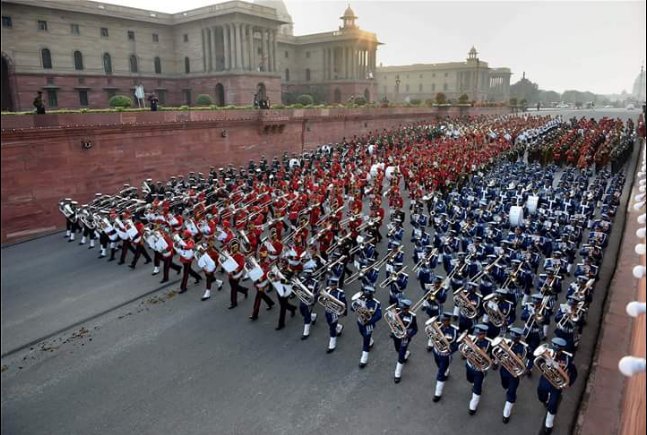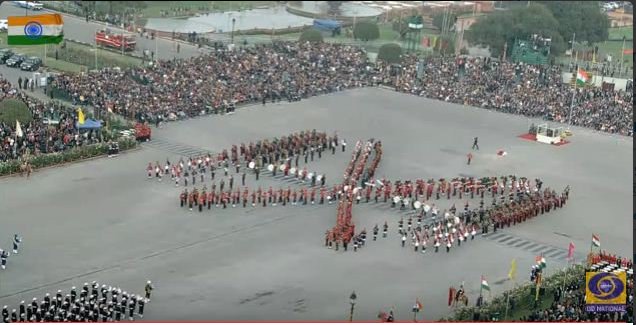Foot-tapping music and soulful classical renditions rent the air as Republic Day celebrations culminated with the Beating Retreat ceremony in Delhi. President Pranab Mukherjee rode the ceremonial buggy down Raisina Hill today for the last time during his tenure.
The ceremonial event at Vijay Chowk saw 16 military bands, and 16 pipes and drums bands from regimental centres and battalions across the country enthralling the crowd, with clear sky and relatively warmer weather adding to the august atmosphere.

Several performances by Army, Air Force and Naval bands, among other troupes, thrilled the audience with patriotic fervour, which cheered loudly in the backdrop of a delightful twilight.
President Mukherjee, the chief guest of the function and the Supreme Commander of the armed forces, drew cheers from the audience as the wheels of his open gold-plated carriage rolled down Raisina Hill.
President Pranab Mukherjee rides in a buggy for last time during his tenure for #BeatingRetreat. pic.twitter.com/4soQrlR80R
— Press Trust of India (@PTI_News) January 29, 2017
Vice-President Hamid Ansari accompanied by his wife Salma, Prime Minister Narendra Modi, Union ministers Rajnath Singh and Gen (retd) VK Singh and Lok Sabha Speaker Sumitra Mahajan were also present on the occasion.
President Mukherjee assumed office in 2012 and during the 2014 Beating Retreat ceremony, the buggy was brought back, three decades after its discontinuation at public functions due to security reasons. However, in 2015 the President had arrived in his limousine.

Beating Retreat marks a centuries-old military tradition, when the troops ceased fighting, sheathed their arms and withdrew from the battlefield and returned to the camps at sunset at the sounding of the Retreat. Colours and Standards are cased and flags lowered.
The event, hosted at Vijay Chowk, surrounded by architectural grandeur, assumes significance as it caps four-day Republic Day celebrations.
The combined pipes and drums bands mesmerised the gathering with soulful strains of Mony Musk, Jak Wilson, The Gael while the tri-services military band with accompaniment of Indian instruments regaled with Yaman, Sky Lark and other renditions.
The ceremony traces its origins to the early 1950s when Major Roberts of the Army indigenously developed the unique ceremony of display by the massed bands.
Beating Retreat brings curtains down on Republic Day celebrations #BeatingRetreat #RepublicDay2017 https://t.co/vmZLiW5sge pic.twitter.com/vZ1vvYPmKi
— News24 (@news24tvchannel) January 29, 2017

















